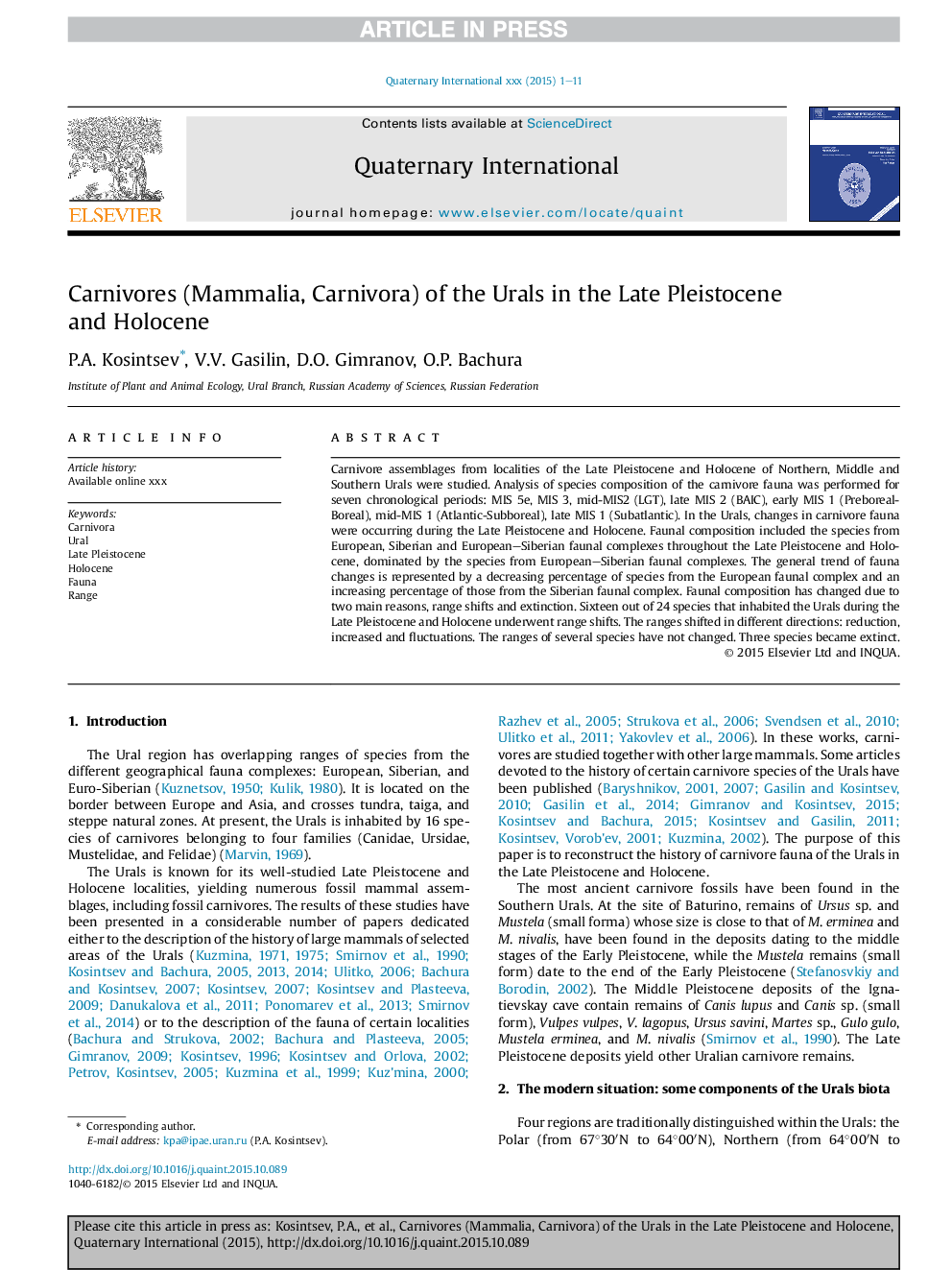| Article ID | Journal | Published Year | Pages | File Type |
|---|---|---|---|---|
| 5113958 | Quaternary International | 2016 | 11 Pages |
Abstract
Carnivore assemblages from localities of the Late Pleistocene and Holocene of Northern, Middle and Southern Urals were studied. Analysis of species composition of the carnivore fauna was performed for seven chronological periods: MIS 5e, MIS 3, mid-MIS2 (LGT), late MIS 2 (BAIC), early MIS 1 (Preboreal-Boreal), mid-MIS 1 (Atlantic-Subboreal), late MIS 1 (Subatlantic). In the Urals, changes in carnivore fauna were occurring during the Late Pleistocene and Holocene. Faunal composition included the species from European, Siberian and European-Siberian faunal complexes throughout the Late Pleistocene and Holocene, dominated by the species from European-Siberian faunal complexes. The general trend of fauna changes is represented by a decreasing percentage of species from the European faunal complex and an increasing percentage of those from the Siberian faunal complex. Faunal composition has changed due to two main reasons, range shifts and extinction. Sixteen out of 24 species that inhabited the Urals during the Late Pleistocene and Holocene underwent range shifts. The ranges shifted in different directions: reduction, increased and fluctuations. The ranges of several species have not changed. Three species became extinct.
Related Topics
Physical Sciences and Engineering
Earth and Planetary Sciences
Geology
Authors
P.A. Kosintsev, V.V. Gasilin, D.O. Gimranov, O.P. Bachura,
